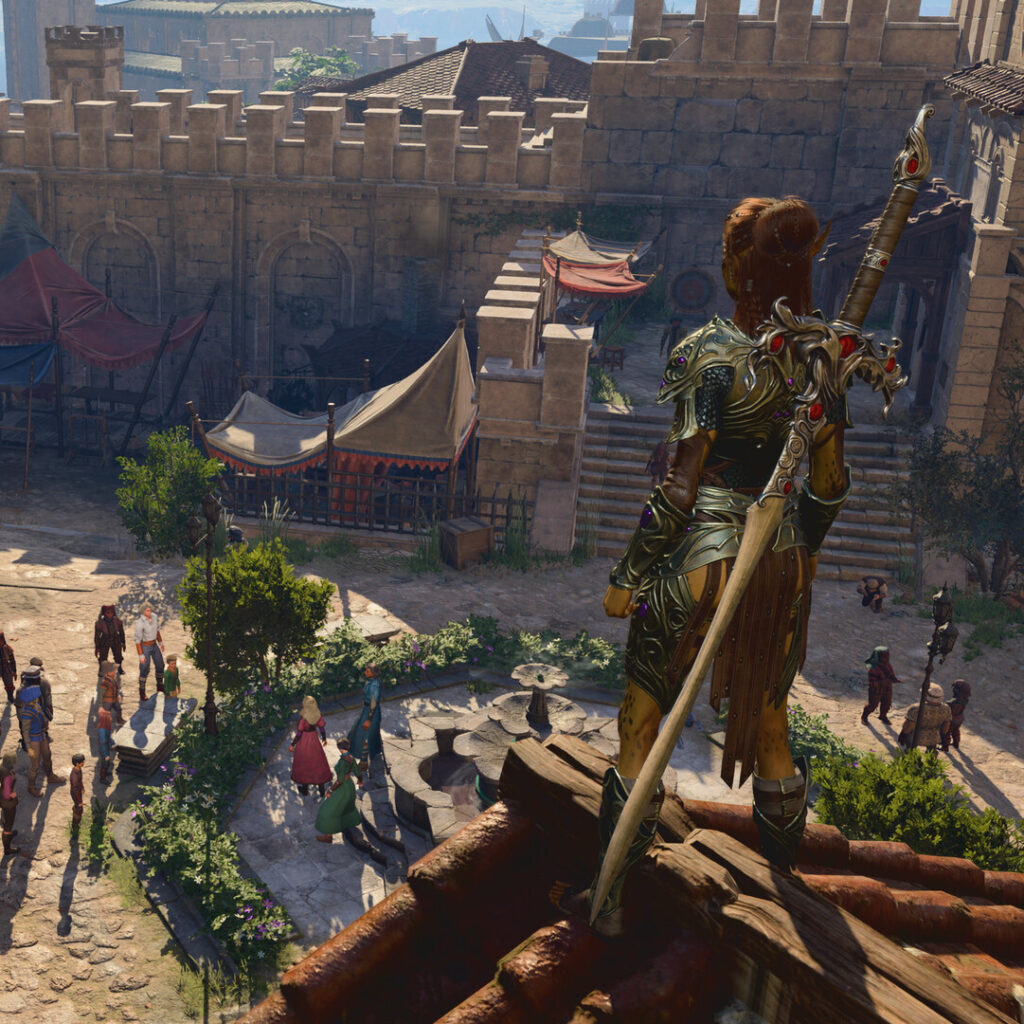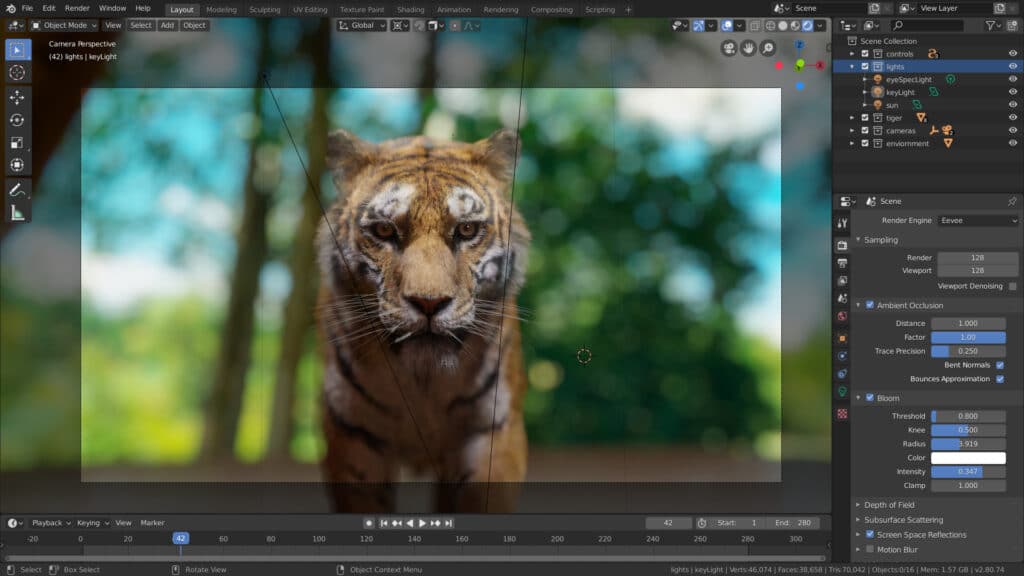Video games rule, and it should be no surprise with billions of people playing them all day and all night. But how do these amazing games get made – in the discussion of game art vs game design, for instance, which plays the bigger role?
Well, three main groups work on video games: programmers, artists, and designers. For most people, the distinction between a game coder and the other two is obvious. Still, it might not be as clear for game artists and game designers, especially in a world where “design” is highly associated with “graphic design.”
In this article, we’ll explore the key differences between game art vs game design – explaining in detail their core responsibilities and the skills required to become one.
You may also like: Video game studios and AI – how will they relate?
Game art vs game design: what are the key differences?
First things first, let’s picture a film production. On one hand, you have the art director. On the other, a scriptwriter. While both roles are vital and work toward the same goal, the way and means through which they achieve it are very distinct.
Similarly, in video games, game art and game design are linked, yet serve different purposes.

The former creates lovely aesthetics that captivate players’ senses, translating the creative vision into a visually stunning and cohesive world. Game artists design characters, environments, user interfaces, animations, and much more, ensuring that the game’s ambiance and style are just right and immersive.
The latter focuses on the conceptualization and mechanics behind an interactive gaming experience. One could say game designers are the masterminds thinking about the gameplay mechanics, level design, narrative, worldbuilding, dialogues, and overall player experience.
In some cases, their task is to craft the kernel of the game, ensuring the player’s actions and decisions have a meaningful impact within the universe.
Now that we have an overview of the key differences between these two crucial roles in game development, let’s take a closer look into both niches.
A deeper look into game art
Game artists are the visual storytellers, responsible for bringing the game’s world to life. From character design to environment creation, their skilled hands mold the visual elements that capture the player’s imagination.
Character design is one of the core aspects of game art, where artists breathe life into the heroes, villains, and other non-playable characters (NPCs) that populate the game. Be it a valiant knight, a cunning antihero, a quirky sidekick, or a hideous villain, the character’s appearance, personality, clothing, and movement patterns all fall under the responsibility of the game artist.
Environmental design is another key element, as game artists craft the levels, landscapes, and objects that players will explore and interact with. They must ensure the virtual spaces are visually stunning and logically coherent, enhancing the sense of immersion, which is especially important in role-playing (RPGs) and open-world games.
The user interface (UI) also falls under the game artists’ domain. They are responsible for designing the menus, icons, and the overall visual flow of the game, ensuring the player’s interaction with the digital world is seamless and intuitive. They usually work with game designers as UI is closely related to user experience (UX) to provide the best possible UX.
On top of everything, animation is a vital aspect of game art, as it brings the characters and environments to life. From the graceful movements of a protagonist to the dramatic special effects that punctuate key moments, the game artist’s mastery of animation delights the player’s senses and completes the overall experience.
The world of game art can be further categorized by its dimensionality: 2D artists work on characters, environments, UI elements, and game icons, among other things, often employing techniques like hand-drawn animation and sprite sheets. In contrast, 3D game artists work directly with 3D modeling, sculpting, and rigging tools to create characters, objects, and entire environments within a three-dimensional space.

Skills needed to make it as a game artist
So you’re drawn to the worlds of video games and want to be the one who brings them to life visually? Being a successful game artist requires a blend of artistic and technical skills. Here’s a general breakdown of some key areas to focus on:
- Strong artistic fundamentals: whether you’re working in 2D or 3D, knowing the foundational skills of your selected niche will go a long way. 2D artists will mostly look into constructional drawing, perspective, form, shading, coloring, and more, while 3D artists will focus on proportions, shape language, animation principles, and compositions;
- Software proficiency: most game studios utilize industry-standard software packages. Familiarize yourself with tools like Adobe Photoshop for 2D concept art and texturing, or modeling software like Maya, Blender, and ZBrush for creating 3D characters and environments;
- Some technical skills: while pure artistic skill is essential, having some knowledge of 3D modeling principles, optimization techniques, and potentially scripting languages can be valuable assets in this line of work;
- Collaboration and other soft skills: unless you’re a solo developer, game creation is a collaborative effort. The ability to communicate your artistic vision effectively and work alongside fellow developers is essential for creating a cohesive and enjoyable final product. Great attention to detail and creativity are always good to have, too.
What about game design?
While game art focuses on the visual aspects, game design encompasses the conceptualization and mechanics behind the player’s interactive experience.
At the heart of this niche lies the gameplay mechanics – the internal rules governing the game, its challenges, and actions that players can take within the digital world. In other words, game designers are responsible for ideating the systems governing how the player may interact with the world.
Level design is another essential aspect of game design. This is all about envisioning and constructing the stages players will navigate, carefully placing their enemies, puzzles, obstacles, objects, and perhaps secrets to create engaging and challenging experiences.
Storytelling and narrative are also essential components of game design. While not every game requires them, especially casual games, those elements are always good to have. They focus on creating plots with more twists than Westworld’s 2nd season, developing memorable characters, building immersive worlds (sometimes complete with multiple societies, custom religions, and so on) that tickle the players’ imagination, and so on. Game designers work alongside writers and other creative collaborators to bring the game’s narrative to life.

However, game design isn’t purely confined to the creative realm – technical considerations also play a crucial role.
Some designers work closely with programmers and even artists to ensure the envisioned mechanics and features can be translated into a functional reality within the constraints of the target platform; others might be too concerned with aspects like game balance, ensuring different elements like character abilities, enemy difficulty, resource management, and rewards are finely tuned to create a fair and enjoyable gameplay experience.
And what does a game designer need to know?
We’ve seen that a game designer’s skillset leans more towards the creative and technical aspects of crafting an engaging interactive experience. Here are some key areas a game designer should focus on:
- Creativity and innovation: the ability to brainstorm original ideas, craft compelling game mechanics, and develop unique worlds is paramount. Game designers must constantly push boundaries and see ways to surprise and delight players;
- Basic programming skills: while not every game designer needs to be a Donald Knuth, having a fundamental understanding of programming languages like C#, C++, Lua, or even Python allows them to prototype mechanics and test their ideas quickly;
- Storytelling techniques: even if a game doesn’t have sprawling narratives, understanding concepts like plot structure, character development, and worldbuilding can significantly enhance the player’s experience;
- Project management skills: game development is a complex undertaking with thousands of moving parts. Game designers will often be required to juggle many tasks, prioritize features, and ensure the project stays on track and within budget;
- UI/UX knowledge: game designers must understand how players interact with menus, controls, and on-screen information. They must be able to envision interfaces and controls that are intuitive to learn, ensuring a smooth and enjoyable experience;
Game art vs game design: conclusion
All in all, while these two roles may seem disparate, they are essential components of the game development process, working together to create the immersive and engaging experiences billions of gamers all know and love.
By understanding what settles the discussion surrounding game art vs game design, we can better appreciate the dedication and talent that goes into the creation of our favorite games – and perhaps set you on your way to a new career.

Are you brimming with creative ideas and passionate about crafting unforgettable gameplay experiences? Here at Main Leaf Games, we offer a team of over 70 talented professionals with expertise in both game art and game design. We’re proficient in industry-leading engines like Unity and Unreal Engine, allowing us to tackle projects of all shapes and sizes.
Whether you need a hand with crafting captivating visuals, fleshing out innovative mechanics, or anything in between, we at Main Leaf can be your trusted outsourcing partner throughout the development journey.
Contact us today and see how our expertise can bring your project to life! We’ll answer you within 24 hours.

